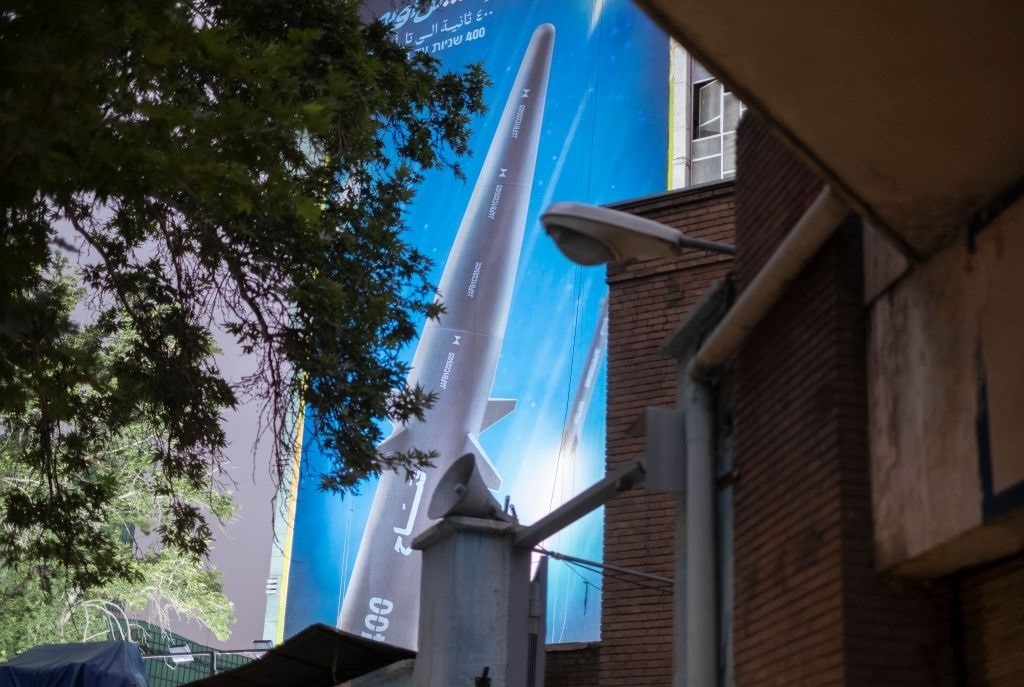Hypersonic missiles and aircraft have been part of the Defense Department’s technology and weapon systems development programs for decades, reflecting the abiding fascination with manned and unmanned aerial vehicles going faster than the speed of sound. Most recently, developing reliable hypersonic missiles became a priority for the US military when, in late summer 2021, the People’s Republic of China (PRC) successfully tested a hypersonic glide vehicle launched from an intercontinental ballistic missile. The test caught the US intelligence community by surprise.

(Photo by Jakub Porzycki/NurPhoto via Getty Images)
In February 2023, Americans watched as a Chinese high-altitude spy balloon meandered its way across the northern United States. Eventually, the Biden administration decided to shoot down the PRC surveillance craft over the Atlantic after it had loitered above sensitive military installations. So, what does a slow-moving People’s Liberation Army (PLA) reconnaissance balloon have to do with Chinese missiles traveling at hypersonic speeds? Good question. And the answer is troubling.
Balloons and Hypersonic Missiles
The 741-page “2023 Report to Congress of the US-China Economic and Security Review Commission” warns about a dangerous nexus between the PLA’s spy balloon program and hypersonic weapons. The integration of these equipment types is worrisome because their command, control, and communications relay information on targeting. As the commission described:
“China’s balloons are reportedly capable of gathering signals intelligence, allowing it to collect large amounts of communications and data on targets below … Balloons allow China to operate more stealthily because they move with wind patterns rather than the fixed — and thus more predictable — patterns of satellites … Balloons also allow China to gather clearer images because they are able to hover above a target for extended periods of time, unlike a satellite that is in constant motion.”
To take advantage of the intelligence-gathering capabilities of balloons and hypersonic missiles’ speed and maneuverability, the PLA has placed the two programs under a single command and control organization and structure. “China’s high-altitude balloon program is linked to the military’s hypersonic missile program, and a new command for both systems is prepared to conduct ‘merciless’ attacks in a conflict with the United States, according to a Chinese defense research report,” Bill Gertz reported in The Washington Times. The report went on to explain China set up “command for hypersonic missiles and high-altitude balloons,” known as Near Space Operations Command, which will “direct hypersonic missiles against heavily protected targets, including communications equipment and hubs in the heartland of an adversary,” Gertz explained.
Indo-Pacific Defense Challenge
Hypersonic missiles are not only fast but also highly maneuverable glide vehicles, so one targeting an aircraft carrier would be challenging to deter. However, shooting down these high-speed weapons is not impossible, as we have seen in Ukraine. “Ukraine said … it had shot down six Russian Kinzhal missiles in a single night, thwarting a weapon Moscow has touted as a next-generation hypersonic missile that was all but unstoppable,” Reuters reported in May.
Nonetheless, the commission’s report described Beijing’s advances as ominous, evaluating the Chinese capability to engage US forces in the Indo-Pacific:
“China’s huge inventory of conventional ballistic, cruise, and hypersonic missiles already limits the United States’ ability to operate freely within the second island chain. Beijing’s pursuit of space-based nuclear weapons and potential development of low-yield warheads could also complicate US deterrence by offering the PLA greater flexibility to threaten or engage in limited nuclear use against US forces in the region.”
The second island chain is a line of islands from Midway Island through the Marianas, Palau, and the Marshall Islands, with Guam at the end. The first island chain comprises Okinawa, Taiwan, and the Philippines.
Mission Accomplished – For China
In February, the news media reported that then-Chairman of the Joint Chiefs of Staff Mark Milley claimed the PLA spy balloon did not collect or transmit intelligence information while lingering over the United States. But Milley may have missed the point. The Beijing balloon could have been sent to test the prevailing winds on predicting where a balloon might go to support a hypersonic missile attack on critical strategic military installations in the United States. Whether the balloon was collecting and transmitting was not relevant to the PLA’s purpose. What Biden’s defense team did was let the balloon complete its mission.
The views expressed are those of the author and not of any other affiliation.




